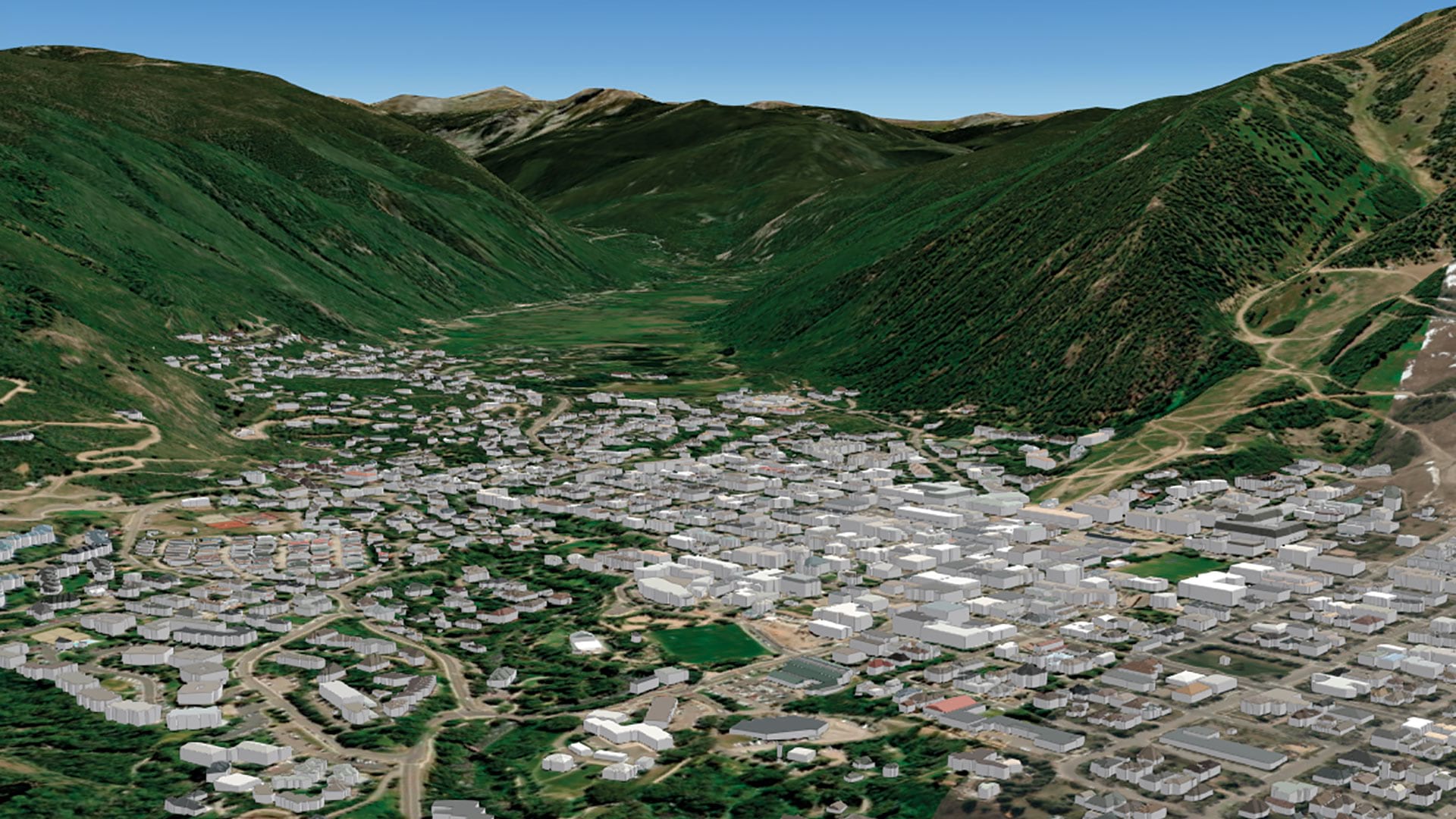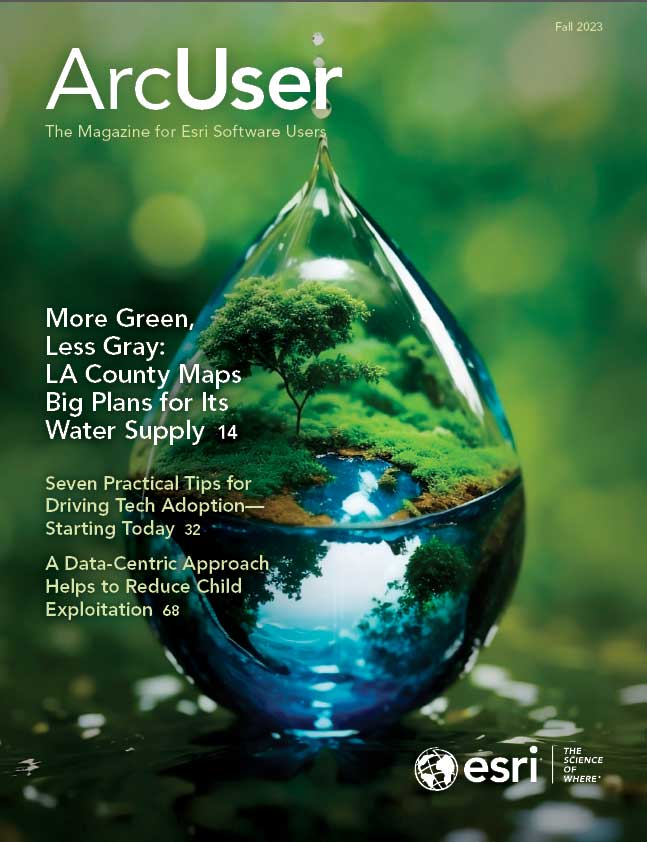ArcGIS Enterprise 11.1 for Windows and Linux and ArcGIS Enterprise on Kubernetes were released in the second quarter of 2023. This article discusses why you want to upgrade to ArcGIS Enterprise 11.1 and how to plan for this upgrade.
New features and improvements in ArcGIS Enterprise 11.1 are designed to help your organization work more efficiently, integrate data, and support data-driven decision-making. Key highlights of this release include custom data feeds, service webhooks, organization webhooks interface, Map Viewer and Scene Viewer enhancements, administration enhancements, and app and server role updates.
Custom data feeds allow you to create read-only feature services from any data source that are ready to be used anywhere in the ArcGIS system. The data does not need to be in a native format supported by ArcGIS clients. This data can remain in its custom format and location while being fetched by ArcGIS Enterprise. Custom data feeds open up possibilities for bringing in data that is not natively supported by ArcGIS and using it to inform decision-making.
Webhooks for feature service events implement CRUD [create, read, update, and delete]operations for referenced and hosted services. Geoprocessing service webhooks are also available to provide job status on asynchronous services. These webhooks are configurable within the ArcGIS Enterprise portal. Service webhooks can help improve efficiency for your organization by providing notification when an event occurs instead of requiring regular checks for updates.
Organization webhooks can be used to track events for portal-level actions such as user-, item-, and group-related operations. Although ArcGIS Enterprise has supported organization webhooks for the last several releases, with 11.1 organizational webhooks can be configured in the ArcGIS Enterprise portal. Organization webhooks, like service webhooks, improve efficiency by providing notification when specific events occur.
Visualize data in new ways with pie charts in Map Viewer and the Daylight and Weather tools in Scene Viewer. These enhancements provide additional context to your data visualizations.
To learn more about 11.1 enhancements, read the blog post “What’s New in ArcGIS Enterprise.” For a full overview of this release, read the product documentation.
Maximize the Value of Your GIS Investment
ArcGIS Enterprise constantly evolves. New versions are regularly released. To get the full value from the product, you need to upgrade regularly to get new features, functionality, enhancements, and security updates. The product life cycle provides a window of support for each version of ArcGIS Enterprise as it moves from general availability to extended support to mature support to retirement over a predetermined period.
There are two release support categories for ArcGIS Enterprise: short term and long term. Short-term support releases receive technical support for three years and patches for 18 months. Long-term support releases receive technical support for six years and patches for four years.
It is critical to upgrade regularly so that your organization stays on a supported version of ArcGIS Enterprise. Retired versions no longer receive technical support or patches. Once your organization’s current version of ArcGIS Enterprise reaches extended or mature support, you must have a clear plan for upgrading before that version is retired. For more information, refer to documentation on the product life cycle or the technical support website for the support status for versions of ArcGIS Enterprise.
In addition to its many improvements, ArcGIS Enterprise 11.1 is a long-term support release. The 11.1 release of ArcGIS Enterprise is especially important if your organization is a utility or telecom company because it is designated as a network management release. For more information, read “What’s New with the Network Management Release Plan.”
Things to Consider before Upgrading to ArcGIS Enterprise 11.1
Substantial changes were made to ArcGIS Enterprise with the 11.0 release in 2022. Beginning with ArcGIS Enterprise 11.0, the ArcMap-based runtime is not supported, ArcMap services cannot be published to ArcGIS Enterprise, and ArcGIS Enterprise SDK moved from .NET Framework 4.x to .NET 6.
At the 11.0 release, the following products have been retired:
- ArcGIS Dashboards Classic
- Esri Story Maps Classic Templates
- Presentation for Map Viewer Classic
- Many ArcGIS Configurable Apps templates
You will need to migrate content from Esri Story Maps Classic, ArcGIS Configurable Apps, and other retired templates to new templates.
Any ArcMap-based services your organization uses will need to be migrated to ArcGIS Pro so they can be used in ArcGIS Enterprise. Map, feature, geodata, and image services will automatically migrate when you upgrade. Some service types, including geoprocessing, geocoding, and network analysis services will not upgrade automatically migrate and will need to be manually migrated to ArcGIS Pro. For more information on this process, see the tech paper Manually migrating services from the ArcMap-based to ArcGIS Pro-based runtime.
With version 11.1, the ArcMapServiceCheck tool can be used to generate an HTML report that provides details on the status of ArcMap-based runtimes that existed prior to the upgrade process. The report provides information on the services that were successfully migrated and the services that require additional steps to use the ArcGIS Pro-based runtime.
At ArcGIS Enterprise 11.1, the IIS Web Adaptor and Enterprise SDK now use .NET 6. This new generation of .NET is one of the many ways that ArcGIS Enterprise continues to modernize its underlying technology. Make sure your machines can meet system requirements for these updated tools by installing .NET 6.
If your organization needs to continue using ArcMap-based services or can’t migrate to the new apps yet, Esri recommends using ArcGIS Enterprise 10.9.1 prior to upgrading to 11.1 because this is the last version to support both ArcMap- and ArcGIS Pro-based runtimes and includes support for old and new app templates. ArcGIS Enterprise 10.9.1 is a great version to do any migration work needed prior to upgrading to ArcGIS Enterprise 11.1. See “Enterprise 10.9.1 until you’re ready to turn it up to 11” and documentation on upgrading for more information.




